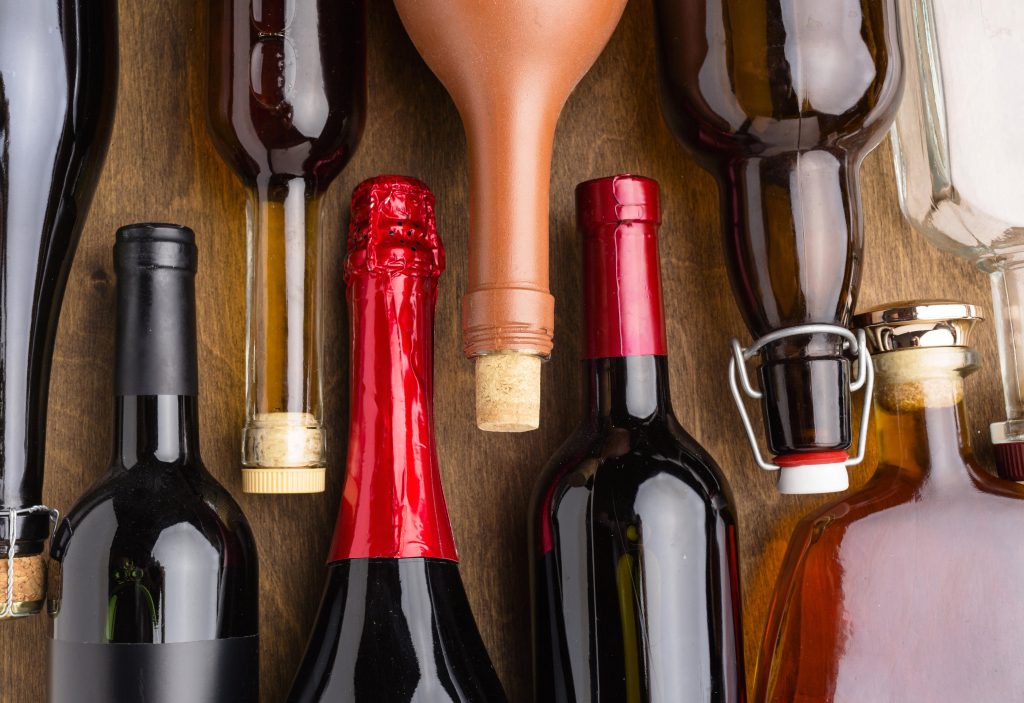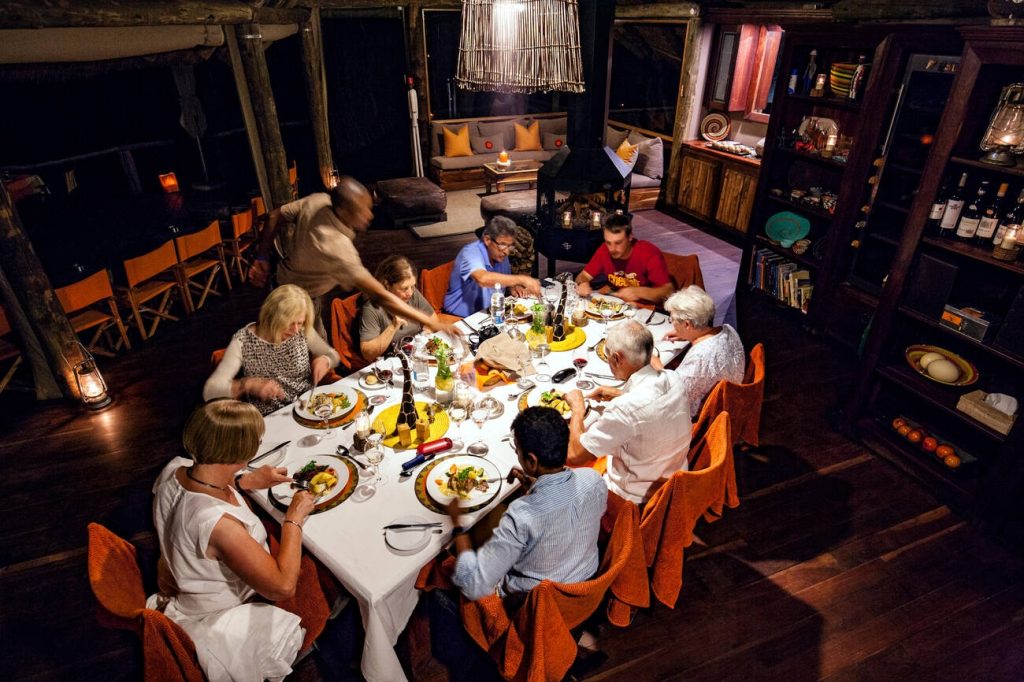Are you a wine enthusiast looking to expand your knowledge? Look no further! In this comprehensive guide, we’ll take you on a journey through the A-Z of the most prestigious wine brands. From Bordeaux to California, from Italy to New Zealand, we’ll explore the rich history, unique characteristics, and exceptional quality of each brand. Discover the top wineries, regions, and vintages that have made their mark. Delve into different grape varieties, styles, and aging potential. Elevate your drinking experience with expert insights and recommendations. Uncork the secrets of top wine brands and elevate your knowledge to new heights.
Contents
Bordeaux Wines
If you’re a wine enthusiast, you’ll love exploring the world of Bordeaux wines. Bordeaux, located in southwestern France, is known for its prestigious wine regions and exceptional winemaking traditions. One of the fascinating aspects of Bordeaux wines is the diverse appellations and terroir influences found throughout the region. From the Left Bank to the Right Bank, each sub-region offers its unique characteristics and styles of wine. Bordeaux is also renowned for its Cabernet Sauvignon wines, and a popular comparison is often made between Bordeaux and Napa Valley in California. Both regions produce outstanding Cabernet Sauvignon wines, but they showcase different expressions due to variations in climate, soil, and winemaking techniques. When it comes to aging and collecting Bordeaux wines, certain vintages stand out as exceptional. Wine enthusiasts pay close attention to vintage charts to uncover the best years for cellaring these wines. Another fascinating aspect of Bordeaux wines is the art of blending grape varieties. Bordeaux blends typically incorporate Cabernet Sauvignon, Merlot, Cabernet Franc, Petit Verdot, and Malbec, creating complex and balanced wines. Finally, Bordeaux wine tourism allows visitors to discover the must-visit chateaux and vineyards in the region. From the iconic Château Margaux to the historic Château Lafite Rothschild, there are countless opportunities to immerse oneself in the world of Bordeaux wines.
California Wines
Moving on from Bordeaux wines, let’s explore the world of California wines. California is home to a diverse range of wine regions, each with its own unique characteristics and styles. Here are four key aspects to consider when delving into the world of California wines:
- California Wine Regions: California is known for its diverse wine regions, including Napa Valley, Sonoma County, Central Coast, and Santa Barbara. Each region has its own microclimates and soil types, which contribute to the distinct flavors and characteristics of the wines produced there.
- Napa Valley vs Sonoma County: Napa Valley and Sonoma County are two of the most renowned wine regions in California. Napa Valley is known for its bold, Cabernet Sauvignon-based wines, while Sonoma County offers a more diverse range of varietals, including Chardonnay, Pinot Noir, and Zinfandel. Both regions produce high-quality wines, but they have different styles and terroir.
- California vs International Wines: California wines have gained international recognition for their quality and innovation. They often compete with wines from renowned regions such as Bordeaux, Burgundy, and Tuscany. California wines offer a unique expression of grape varieties and winemaking techniques, showcasing the state’s commitment to producing world-class wines.
- California Wine Trends and Food Pairings: California wine trends are constantly evolving, with a focus on sustainability, minimal intervention winemaking, and exploring lesser-known grape varieties. When it comes to food pairings, California wines are versatile and can complement a wide range of cuisines. Popular pairings include Napa Valley Cabernet Sauvignon with grilled steak, Sonoma County Pinot Noir with roasted salmon, and Chardonnay with creamy pasta dishes.
California wines continue to captivate wine enthusiasts with their bold flavors, diverse styles, and commitment to quality. Whether you’re a wine novice or an experienced connoisseur, exploring the world of California wines is a journey that promises to be both exciting and rewarding.
Italian Wines
Exploring Italian wines offers a tantalizing glimpse into the world of complex flavors and rich traditions. Tuscany, in particular, is home to two renowned wine regions: Chianti Classico and Brunello di Montalcino. Chianti Classico is known for its vibrant red wines, primarily made from the Sangiovese grape. These wines showcase bright cherry flavors, firm tannins, and a refreshing acidity. Brunello di Montalcino, on the other hand, produces powerful and age-worthy wines, also crafted from the Sangiovese grape. These wines exhibit intense aromas of red fruits, earthy notes, and a velvety texture.
Beyond Tuscany, Piedmont and Veneto are two other Italian regions that have gained recognition for their exceptional wines. Piedmont is renowned for its Nebbiolo grape, which produces the iconic Barolo and Barbaresco wines. These wines are characterized by their bold flavors of red fruits, tar, and roses, along with firm tannins and high acidity. Veneto, on the other hand, is known for its diverse styles of Italian white wines. From the crisp and refreshing Soave to the aromatic and slightly sweet Prosecco, Veneto offers a wide range of white wine options.
In recent years, there has been a rise in the popularity of Super Tuscan wines. These wines are a blend of traditional Italian grape varieties, such as Sangiovese, with international grape varieties like Cabernet Sauvignon and Merlot. Super Tuscans are known for their rich and complex flavors, as well as their ability to age gracefully. This blending of grape varieties has allowed winemakers to create wines that combine the best of both worlds, resulting in unique and exciting expressions of Italian winemaking.
With its diverse wine regions, unique grape varieties, and a commitment to tradition, Italian wines continue to captivate wine enthusiasts around the world. Whether you’re savoring a glass of Chianti Classico, exploring the elegance of Barolo, or indulging in a Super Tuscan, Italian wines offer a truly remarkable and unforgettable experience.
French Wines
French wines are renowned for their diverse grape varieties, distinct terroir-driven characteristics, and rich winemaking traditions. Here is a closer look at what makes French wines so special:
- French wine regions: France is home to numerous wine regions, each with its own unique climate, soil composition, and winemaking techniques. From Bordeaux in the southwest to Burgundy in the east and the Rhône Valley in the south, these regions produce wines that showcase the terroir of their specific locations.
- French wine and food pairings: French cuisine is world-renowned, and French wines are often the perfect complement to these dishes. Classic pairings include Bordeaux reds with steak, Chardonnay with seafood, and Champagne with oysters. French wines are crafted to enhance the flavors of French cuisine.
- French wine labels explained: French wine labels can be complex, but understanding them can provide valuable information about the wine. Look for the region, appellation, grape variety, and vintage to gain insight into the wine’s origin and style.
- Famous French wineries: France is home to some of the most famous wineries in the world, such as Château Margaux in Bordeaux, Domaine de la Romanée-Conti in Burgundy, and Domaine Tempier in Provence. These wineries have a long history of producing exceptional wines and are highly regarded by wine enthusiasts.
French wine regions and grape varieties: While some French wine regions are known for specific grape varieties, such as Burgundy for Pinot Noir and Chardonnay, others, like Bordeaux, produce a wide range of wines from different grape varieties. The diversity of French wine regions allows for a multitude of grape varieties to thrive and be expressed in their own unique way.
New Zealand Wines
Now let’s delve into the world of New Zealand wines, known for their vibrant and aromatic characteristics. New Zealand wines offer unique flavors that set them apart in the global wine market. The distinct flavor profiles of these wines are a result of the country’s diverse terroir and cool climate. Sauvignon Blanc, in particular, is a standout varietal from New Zealand, showcasing tropical fruit flavors and crisp acidity.
In addition to their exceptional taste, New Zealand wineries also prioritize sustainable practices in their production methods. From organic and biodynamic farming to water conservation initiatives, these eco-friendly approaches ensure that the wines are not only enjoyable, but also produced with minimal impact on the environment.
The rising popularity of New Zealand wines can be attributed to their consistent quality and unique expression of grape varietals. Wine enthusiasts around the world are increasingly seeking out these wines for their refreshing and vibrant characteristics.
When it comes to food pairings, New Zealand wines are versatile and can complement a wide range of dishes. The crisp acidity of Sauvignon Blanc pairs well with seafood, salads, and fresh cheeses, while the more full-bodied reds, such as Pinot Noir, are a great match for roasted meats and earthy flavors.
Lastly, New Zealand’s wine scene is also seeing the emergence of up and coming wineries that are pushing the boundaries of innovation. These wineries are experimenting with new grape varieties and winemaking techniques, resulting in exciting and unique wines that add to the country’s already impressive portfolio.
Sonoma Coast Pinot Noir
When it comes to exploring Sonoma Coast Pinot Noir, you’ll discover a delicate and expressive grape variety that continues the discussion on top wine brands. Here’s what you need to know about this exceptional wine:
- Vineyard terroir: The Sonoma Coast’s unique terroir, with its cool climate, foggy mornings, and maritime influence, plays a crucial role in shaping the flavor profile of its Pinot Noir wines. The combination of these factors results in wines that are vibrant, elegant, and layered with flavors of red fruits, earthiness, and subtle spice.
- Sustainable winemaking: Sonoma Coast wineries are committed to environmentally friendly practices in producing their Pinot Noir. They prioritize sustainable farming methods, such as organic and biodynamic practices, to ensure the health of the vineyards and minimize their impact on the ecosystem.
- Aging potential: Sonoma Coast Pinot Noir has excellent aging potential. These wines often benefit from some time in the bottle to develop further complexity and depth. While they can be enjoyed in their youth, the optimal time to experience the full potential of these wines is typically after 5-7 years of aging.
- Food pairings: Sonoma Coast Pinot Noir is incredibly versatile when it comes to food pairings. Its bright acidity and medium-bodied nature make it a great match for a wide range of dishes. It pairs beautifully with grilled salmon, roasted chicken, mushroom risotto, and even dishes with a touch of spice like duck confit.
- Winemaking techniques: Winemakers in Sonoma Coast employ various techniques to craft their Pinot Noir wines. These may include whole-cluster fermentation, cold soaking, and aging in French oak barrels. These techniques contribute to the wine’s distinct character, enhancing its aromatics, structure, and overall complexity.
Sonoma Coast Pinot Noir is a testament to the region’s winemaking prowess and the potential of this grape variety. Its unique terroir, sustainable practices, aging potential, and versatility with food make it a standout choice for wine enthusiasts looking to explore top wine brands.
Top Wines by Vintage
You’ll want to explore the top wines by vintage to truly appreciate the variety and uniqueness of each year’s grape harvest and winemaking process. The vintage of a wine plays a significant role in its aging potential. Some vintages are known for producing wines that have the ability to age gracefully, developing complex flavors and aromas over time. The key factors that contribute to vintage variations in wine include weather conditions during the growing season, such as temperature, rainfall, and sunlight. These factors can greatly influence the ripeness and quality of the grapes, ultimately affecting the character of the wine. When collecting wines from specific vintages, it is important to consider factors such as the reputation of the vintage, the producer’s track record, and the storage conditions of the wine. It is also helpful to consult expert reviews and ratings to ensure that you are investing in wines with the potential for long-term enjoyment. In terms of current trends, there is a growing interest in older vintages, as wine enthusiasts seek out bottles with more maturity and complexity. Vintage comparisons can reveal the nuances and characteristics of different vintages of the same wine varietal. It is fascinating to observe how the same grape variety can express itself differently in various years, showcasing the impact of the vintage on the final product. By exploring the top wines by vintage, you can deepen your understanding of the intricate relationship between the year of the harvest and the resulting wine.
Wine Scores
Evaluating wine scores is a key aspect of navigating the world of top wine brands and making informed purchasing decisions. Wine scores provide a snapshot of a wine’s quality and can help guide consumers in choosing the right bottle. Here are four key points to consider when it comes to wine scores:
- Factors influencing wine scores: Wine scores are influenced by various factors such as the wine’s aroma, flavor profile, structure, balance, and overall complexity. Critics take into account these elements when assigning a score to a wine.
- The role of critics in determining wine scores: Wine scores are typically assigned by professional critics and publications who have expertise in tasting and evaluating wines. These critics use a standardized tasting process to ensure consistency in their assessments.
- Comparing wine scores across different vintages: Wine scores can vary from vintage to vintage due to factors like weather conditions and grape quality. It’s important to consider the specific vintage when comparing scores to get a more accurate understanding of a wine’s quality.
- How wine scores affect wine prices: Higher wine scores often lead to increased demand and can drive up the price of a wine. Wines with exceptional scores and limited availability can command premium prices in the market.
- The controversy surrounding wine scores and their validity: Wine scores have sparked controversy in the industry, with critics arguing that they oversimplify the complex nature of wine and can influence consumer perceptions. Additionally, some believe that personal taste and preferences should play a larger role in determining a wine’s value.
Understanding wine scores can be a valuable tool in selecting top wine brands. However, it’s essential to consider these scores alongside other factors such as personal taste and the specific characteristics of a wine.
Wine Prices
To get a sense of the cost of top wine brands, take a look at the range of prices offered. Wine prices can vary depending on factors such as quality, rarity, and demand. In the world of wine, price is often associated with the perceived quality of the wine. However, it is important to note that price does not always guarantee a better tasting experience. There are several factors that can affect wine prices, including the region of production, the reputation of the winery, and the vintage of the wine.
To provide a visual representation of the range of wine prices, here is a table showcasing the price range of different wine varietals:
| Wine Varietal | Price Range |
|---|---|
| Cabernet Sauvignon | $20 – $500+ |
| Chardonnay | $15 – $200+ |
| Pinot Noir | $25 – $300+ |
| Merlot | $15 – $200+ |
| Sauvignon Blanc | $10 – $50+ |
It is important to note that these price ranges are approximate and can vary depending on various factors. When looking for affordable wines without compromising on taste, it is advisable to explore lesser-known regions or seek out wines from emerging wine-producing countries. Additionally, considering wines from previous vintages can often yield great value, as older vintages tend to be more affordable compared to the current release. Ultimately, finding a wine that fits your budget and satisfies your palate is key, as price does not always equate to quality.
Wine Spectator’s Selection Criteria
When considering the top wine brands, it is important to understand Wine Spectator’s selection criteria. Here are the key factors that Wine Spectator takes into account when creating their annual Top 100 list:
- Quality: Wine Spectator editors review wines from the previous 12 months and assess the overall excellence and characteristics of each wine. They look for wines that stand out in terms of taste, aroma, complexity, and aging potential.
- Value: Wine Spectator considers the quality-to-price ratio of the wines. They aim to include wines that offer exceptional quality at a reasonable price, providing consumers with good value for their money.
- Availability: The availability of the wines is also taken into consideration. Wine Spectator looks for wines that are accessible to consumers, whether through wide distribution or direct purchase from the winery.
- Excitement: Wine Spectator seeks to include wines that generate excitement among wine enthusiasts. This can be due to innovative winemaking techniques, unique grape varieties, or wines that push the boundaries of traditional styles.
Types of Wine Varietals
If you’re looking to expand your knowledge of wine, it’s essential to understand the various types of wine varietals. Varietal wines are made from specific winegrapes, and they offer distinct flavors and characteristics. To help you navigate through the world of wine varietals, here is a table showcasing some common types:
| Wine Varietal | Description |
|---|---|
| Cabernet Sauvignon | Full-bodied red wine with bold flavors of blackcurrant, blackberry, and cedar. It pairs well with grilled meats and aged cheeses. |
| Chardonnay | A versatile white wine that can range from crisp and unoaked to rich and buttery. It pairs well with seafood, poultry, and creamy dishes. |
| Pinot Noir | A delicate red wine with flavors of red berries, earth, and spice. It pairs well with roasted chicken, salmon, and mushroom dishes. |
| Riesling | A fragrant white wine with notes of citrus, peach, and floral aromas. It pairs well with spicy foods, Asian cuisine, and fresh seafood. |
| Sauvignon Blanc | A refreshing white wine with vibrant acidity and flavors of tropical fruits, citrus, and herbs. It pairs well with salads, seafood, and goat cheese. |
Understanding wine varietals allows you to explore the best food pairings for different types of wine. It also reveals emerging varietals that offer unique characteristics and flavors. Additionally, you can compare and contrast the styles of wine varietals from old world regions, known for their traditional winemaking practices, to new world regions that bring innovation and modern techniques to winemaking. Moreover, discussing the aging potential of different wine varietals helps you identify which ones are worth cellaring. Lastly, exploring how different terroirs can influence the flavors and aromas of wine varietals deepens your understanding of the complex relationship between wine and its origin.
Place of Origin Designations
As you delve deeper into the world of wine varietals, it’s important to understand the significance of place of origin designations. Here are some key points to consider:
- Exploring the significance of place of origin designations in wine: Place of origin designations provide valuable information about where a wine is produced. They indicate the specific geographic region or vineyard where the grapes are grown and the wine is made. This information can give you insights into the unique characteristics and qualities of the wine.
- Understanding the influence of terroir on wine characteristics: Terroir refers to the combination of factors such as climate, soil, topography, and winemaking practices that contribute to the flavor profile and overall quality of a wine. The place of origin plays a crucial role in shaping the terroir and, consequently, the characteristics of the wine.
- Comparing the impact of place of origin on different wine varieties: Different wine varieties can showcase distinct characteristics depending on their place of origin. For example, a Cabernet Sauvignon from Napa Valley may exhibit ripe fruit flavors and bold tannins, while a Pinot Noir from Burgundy might highlight delicate aromas and a silky texture. Understanding the impact of place of origin on different wine varieties allows you to appreciate the diversity and complexity of wines.
- Examining the role of place of origin in wine marketing and consumer perception: Place of origin designations can significantly influence consumer perception and purchasing decisions. Wines from renowned regions or vineyards often carry a premium and are perceived as high quality. Wine marketing often emphasizes the unique attributes associated with specific places of origin to attract consumers seeking authenticity and a sense of place.
- Discussing the legal regulations and certifications associated with place of origin designations in the wine industry: The wine industry has established legal regulations and certifications to protect and designate specific places of origin. These can include geographical indications, appellations, or denominations of origin, which ensure that wines labeled with a specific place of origin meet certain quality standards and production criteria.
Understanding the significance of place of origin designations in wine allows you to appreciate the diversity, complexity, and unique qualities that different regions and vineyards bring to the world of wine. It also provides insights into the marketing strategies and consumer perceptions surrounding wines from specific places of origin.




